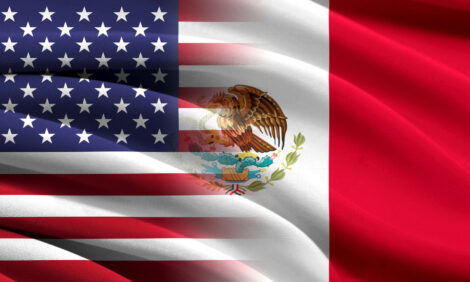



CME: Increase in Meat Prices Begins!
US - CME's Daily Livestock Report for 15th October 2008.It appears that the long-discussed (at least by us!) cost-driven increase in meat prices has finally begun. The chart below shows USDA’s monthly estimates of retail prices for all-fresh beef, pork, composite broilers and turkey. These prices utilize data gathered by the Bureau of Labor Statistics. Weighted averages are computed using carcass proportion weightings, not sales weightings. That is, a pound of retail beef here represents one pound of beef comprised of x percent t-bone steaks, y percent round steaks, etc. where x, y and the other weightings are the percent of a carcass comprised by that particular cut. The All-Fresh beef price includes prices of Choice and Select grade beef as well as “no-roll“ or ungraded beef sold in some stores.

There are some shortcomings to these data, the most obvious being
that meat cuts are not sold through retail stores according to carcass
proportions. Some cuts are over-represented at retail while others are sold
more heavily through foodservice. But computing the prices in this manner
implicitly assigns a value to all of the product produced in the U.S. and using
the retail price of those products is reasonable since retail is generally the
marginal market for meat products.
Proponents of subsidized biofuels have blamed the food price increases
that occurred through mid-2008 simply on higher transportation
costs. On that point they are largely correct. Many food items contain only
small amounts of grains, oilseeds and their products so higher ingredient
costs would not cause much higher prices for these items.
But claims that relatively flat retail meat and poultry prices were
evidence that using grains and oilseeds for fuel would have little impact ignored
a critical factor: Time. We (and other analysts) have warned that
higher grain and oilseeds costs would eventually have a much larger impact
on poultry and meat prices than they were having on other food items simply
because it takes far more grain and oilseeds to produce protein. The higher
costs, though, had to cause financial losses and the resulting reduction of
supplies before prices would rise. That impact is beginning to show up in the
data.
The graph at left shows that both beef and pork prices have risen
steadily since April and March, respectively, and are now record high. Turkey
prices have risen by a more modest amount and chicken prices are
about flat SO FAR. Sharp reductions in egg sets in recent weeks will almost
certainly result in higher chicken prices by year’s end. Further, ALL of these
sectors are in the midst of reducing their breeding herds and flocks, suggesting
lower production and still higher prices in 2009.
How high? That depends on long-term cost levels and how the
farm-to-retail price spreads adjust. If pork producers must cover farm-level
costs of $80/cwt carcass, retail pork prices must go to $3.34/lb. if farm-retail
spreads remain at 2007 levels in dollar terms or $4.82/lb. if spreads remain
at 2007 levels in percentage terms. Breakeven costs of $110/cwt live for fed
cattle would imply retail beef prices of $4.37 to $5.09/lb under the different
spread situations. We feel spreads will return to the same PERCENTAGES,
so the upper ends of these ranges are very, very possible.








